Reflecting on Red Dress Day
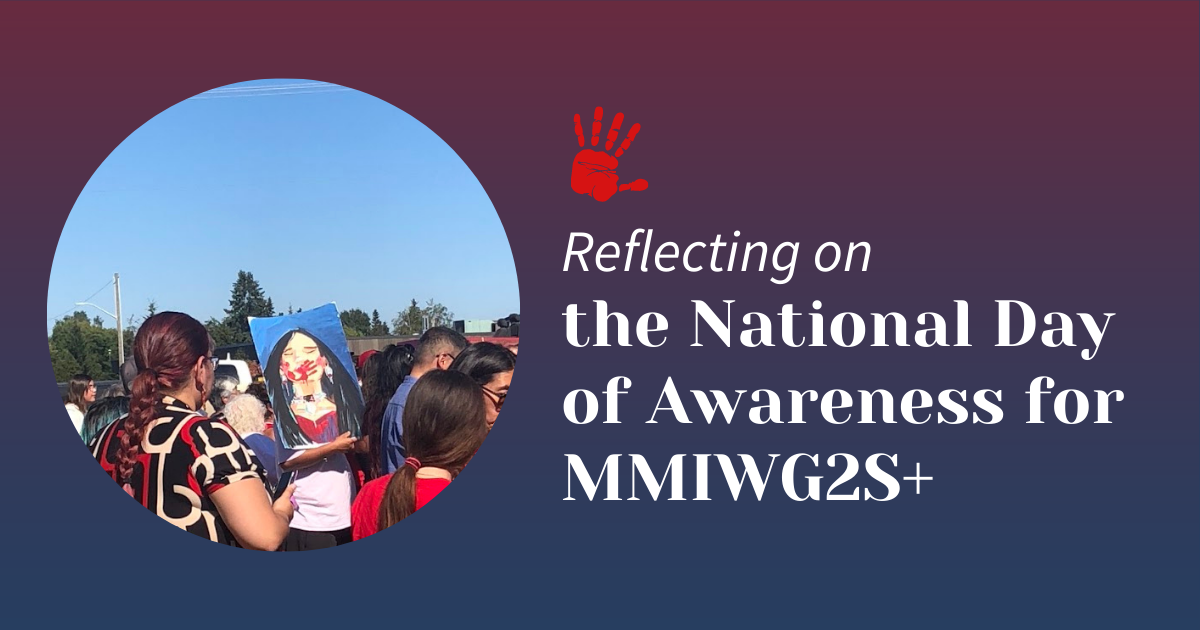
BY MELISSA BATES
Between Prince George and Prince Rupert Highway 16, dubbed ‘The Highway of Tears’ by Florence Nazel in 1998, is a 725 km stretch infamous for its disproportionately high number of Missing and Murdered Indigenous Women, Girls, and 2-Spirit people. Billboards seeking information about missing loved ones are common along long stretches of highway nestled in the remote wilderness. This is not a uniquely northern issue, but one that has sparked conversations across Canada about the conditions that have built a system which consistently finds an over representation of Indigenous victims of violence, abuse and neglect.
At many of the rallies in Prince George, Colten Fluery’s mother brings photos and stickers of her missing 17-year-old son, last seen in Vancouver. This serves as a stark reminder that boys and men are part of this disproportionate and structural violence, and that attention is needed to address the systemic racism that has prevented both the information that could bring closure to families and the safety of Indigenous community members.
Despite the difficult journey this has already been for many, there are incredible people continuing the work needed for justice. The Red Dress campaign was born from the REDress project, an 2014 art installation by Métis artist Jaime Black where over 600 dresses were hung to symbolize those missing. This has been a rallying cry for many to gather behind, and what is represented in the pins you might see on May 5th, the national day to remember MMIWG2S. In Prince George, Brenda Wilson has been the Highway of Tears Initiative Coordinator and leading the charge on making sure that MMIWG2S cases are brought to justice. 28 years ago, her teenage sister Ramona never came home from a graduation party, and the search for her has never ended. Since then she’s supported other families in their search for justice along the Highway of Tears.
I am a guest on Lheidli T’enneh Territory in Prince George. I was invited and welcomed here by Kym Gouchie, a Lheidli T’enneh knowledge holder, artist, activist and mentor who walked along the highway of tears by the beat of her drum. She has been instrumental in guiding me to understand the importance and impacts of this highway, and what it represents within the larger federal context. Her song, Cleansing the Highway was inspired by and written during that walk and can be listened to by clicking here.
Jessica McDiarmid is a journalist who accompanied Kym and the larger group, and wrote the book Highway of Tears which accounts the lives of many of the MMIWG2S and that of their families and communities. The power of these stories and the work done by Brenda Wilson, Kym Gouchie, Jessica McDiarmid and all of the families of loved ones demanding justice is heartbreaking and inspiring. As a non-Indigenous guest on Lheidli T’enneh territory, I will never know what it means to be a First Nations person living on the Highway of Tears and how that impacts a community’s sense of safety. I do know that it demands action from everyone, as this work can’t be shouldered solely by those grieving the loss of their loved ones alone. These are stories that we all need to be witness to. There needs to be gratitude for those that allow themselves to be vulnerable enough to share their stories, and as members of a community together there is a responsibility for listeners to learn, be present and demand answers.
Read more about Jamie Black, the artist behind the Red Dress Project
Watch Brenda Wilson’s story
Read the Highway of Tears by Jessica McDiarmid
Listen to Kym Gouchie’s song Cleansing the Highway
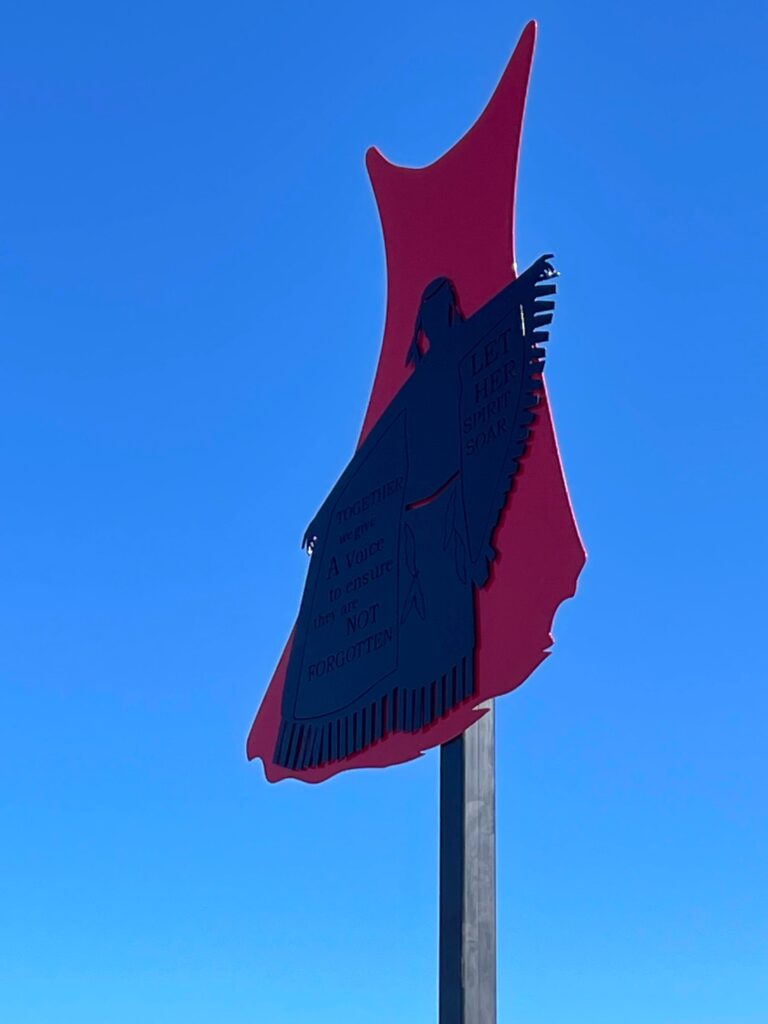
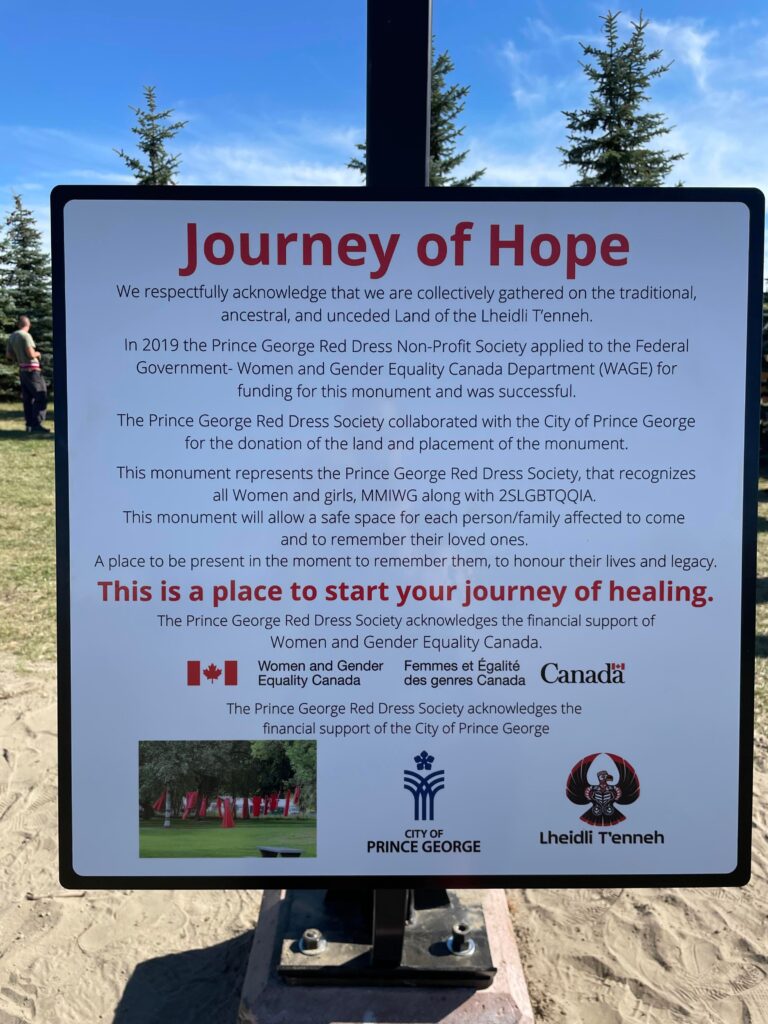
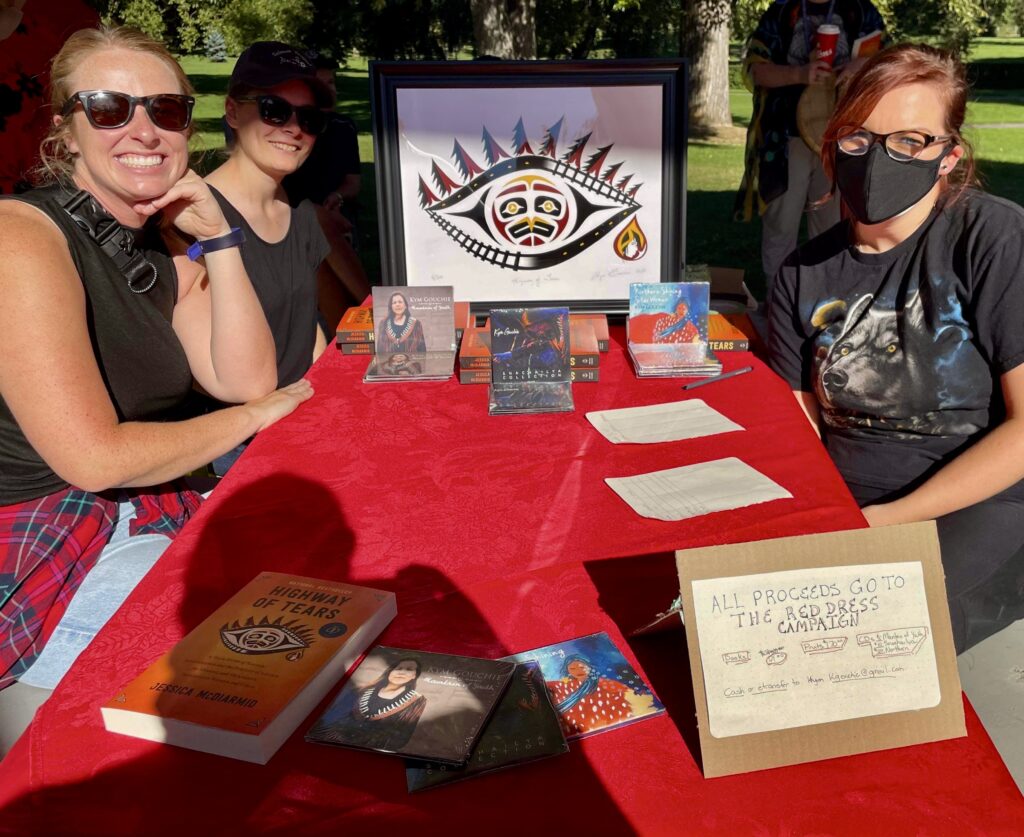

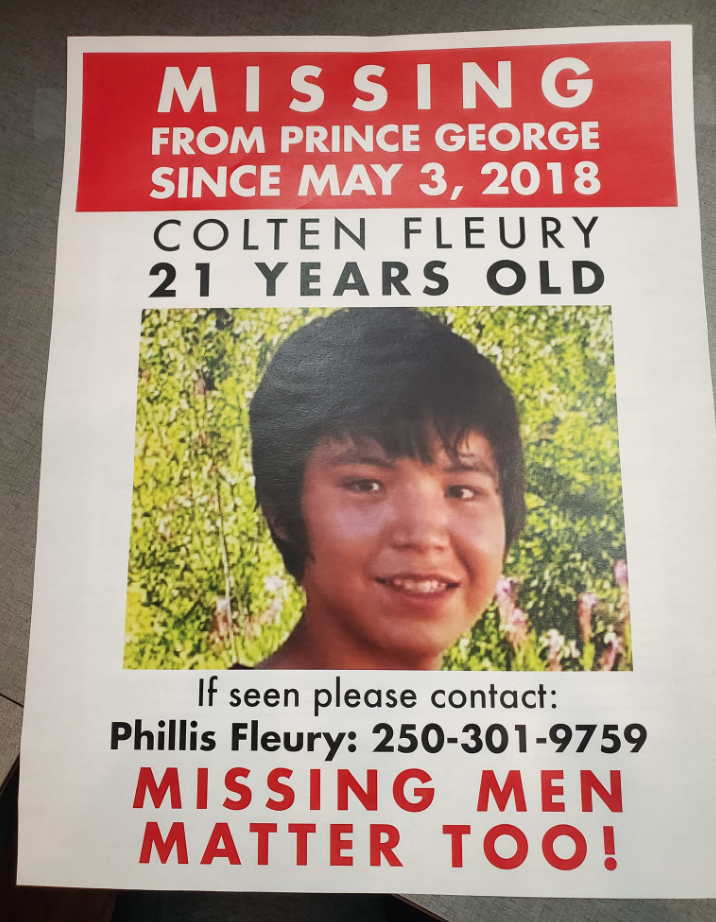
Other Resources and Information
Reclaiming Power and Place: The Final Report of the National Inquiry into Missing and Murdered Indigenous Women and Girls
Hope for Wellness Helpline and Chat Counselling Services for Mental Health and crisis intervention for Indigenous people
NWAC Knowledge Center
TRC Calls to Action
Toll-free support line
1-844-413-6649